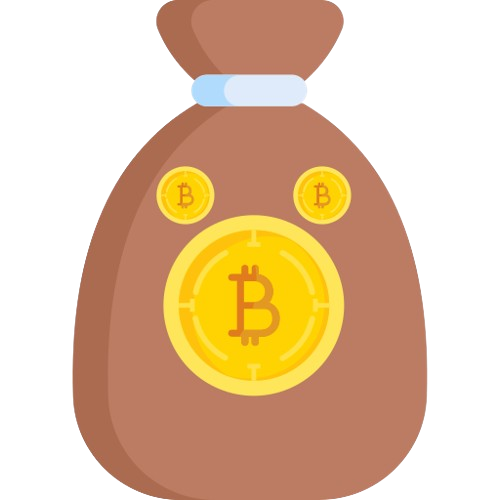
The advent of cryptocurrency and blockchain technology has had a monumental impact on the world of art. As an artistic medium built on digital scarcity and verification, crypto-art is establishing itself as a legitimate art form while introducing novel ways of creating, buying, and selling artwork. Meanwhile, the pseudonymous and decentralized nature of cryptocurrency is empowering artists around the world by expanding their market reach and enabling new revenue streams.
Non-Fungible Tokens and the Rise of Crypto-Art
At the forefront of cryptocurrency’s intersection with art are non-fungible tokens (NFTs) – unique digital assets verified on the blockchain. NFTs have effectively turned digital works into one-of-a-kind collectibles and in the process, spawned the movement of crypto-art. From individual artists minting standalone pieces to exclusive NFT collections dropping on platforms like SuperRare and Foundation, crypto-art is attracting significant attention from collectors and investors alike.
In March 2021, the artist Beeple made headlines when his NFT collage “Everyday” sold at Christie’s for an eye-watering $69 million. The landmark moment catapulted NFTs into mainstream consciousness and signaled crypto-art’s coming of age as a creative industry. Other established artists like Damien Hirst have also released NFT drops, lending further credibility. Massive sales volumes on NFT marketplaces like OpenSea underscore the meteoric rise of this nascent art vertical.
Democratizing Art Creation and Ownership

Beyond enabling digital scarcity, NFTs are also dramatically leveling the playing field for artists. Crypto-art provides a decentralized platform for creators to instantly showcase and sell their work to a global audience.
Artists can mint NFTs directly without intermediaries and keep a greater share of secondary sales proceeds compared to the legacy art world. Democratized access paired with transparent tracking of ownership and sales data is greatly empowering artists in monetizing their creativity.
Additionally, the lowered barriers to entry are allowing digital artists and designers from underrepresented communities to thrive as well. Creators who may have struggled for years to get recognized by art gatekeepers like galleries and museums are finally garnering attention from collectors who value their unique cultural perspectives.
Transforming Art Patronage
The pseudo-anonymous, trustless nature of cryptocurrency and NFTs is also profoundly impacting art patronage. Digital wallets like Metamask allow collectors to easily purchase crypto-art without revealing their identities. This provides more privacy and protection compared to high-profile art buyers at mainstream auction houses. Crypto-enthusiasts are also pooling funds together in DAOs (decentralized autonomous organizations) to collectively buy prized NFT assets.
Additionally, cryptocurrency and NFTs enable new forms of direct artist support. Many collectors are commissioning custom NFTs from creators instead of buying pre-made works. Certain NFT projects even have embedded royalty structures where artists receive a percentage from secondary sales in perpetuity. This provides ongoing revenue streams beyond the initial purchase.
Physical Meets Digital
Even as crypto-art solidifies its presence, the physical art realm is also gradually embracing blockchain verification and cryptocurrency transactions. Wealthy buyers at prestigious houses like Sotheby’s and Christie’s can now use crypto to bid on fine art, antiques, and luxury collectibles. Certain high-end galleries are also exhibiting NFTs on digital displays alongside physical paintings and sculptures.
This merging of physical and digital art is likely to continue evolving in line with advances in augmented/virtual reality and 3D holographic technology. Soon, hybrid physical-NFT artworks could emerge where collectors own both the original physical creation as well as its NFT “twin” containing supplemental features like audiovisual content.
Art Fairs and Metaverse Galleries
As crypto-art gains momentum, NFTs and digital assets are poised to dominate art fairs and expos as well. Prominent events like the Armory Show have already incorporated NFTs while new players like Art Basel Miami are launching dedicated metaverse galleries. Tech-savvy collectors can soon expect state-of-the-art virtual reality booths allowing comprehensive previews of NFT drops before minting or trading.
Over the coming years, expect crypto-integrated fairs boasting Web3 credentials like decentralized ticketing, virtual galleries in blockchain-based metaverses, crowdsourced curation models as well as dedicated conference tracks on relevant topics like NFT provenance.
Securing Your Crypto-Art Assets
As cryptocurrency and crypto-art gain wider traction globally, collectors need robust security infrastructure to safeguard holdings. Software wallets allow convenient storage and display of NFT assets alongside cryptocurrencies. For hardcore collectors and investors, hardware wallets provide offline asset protection comparable to secure bank lockers.
The Pioneering Journey Ahead

As blockchain technology permeates the art industry, its decentralizing influence will profoundly reshape established norms around art valuation, patronage, privacy, and accessibility. Crypto-art is still in its formative era but continues gaining creative sophistication and collector interest with every passing month.
NFTs will likely emerge as a prominent fixture at leading auction houses over the next few years. Simultaneously, augmented reality and immersive 3D spaces will dramatically elevate how crypto-art gets exhibited and traded globally. As virtual worlds like Cryptovoxels and Decentraland mature on the blockchain, NFT galleries promise to become a cultural focal point attracting both native metaverse residents as well as visitors from the physical realm.
On the patronage front, expect more decentralized grassroots efforts around community-oriented art spaces and museums that leverage the transparency and accessibility of cryptocurrency. Democratized patronage could also manifest via donation-based crowdfunding platforms and fractionalized NFT ownership models allowing collective investment in big-ticket pieces.
Further ahead, seamless integration of cryptocurrency payments and NFT ownership verification at both physical and virtual establishments will become ubiquitous. Next-generation crypto wallets will likely offer enhanced multi-chain capabilities alongside integrated DeFi services for insured custody, staking, lending, and borrowing against NFTs.
As cryptocurrency adoption accelerates worldwide, its transformational impact across the art industry will only grow exponentially. Crypto-art promises to emerge as the predominant digital art form over the coming decade while fundamentally expanding art’s creative boundaries. The revolutionary era of blockchain-powered artistic innovation and patronage has only just begun!
The possibilities ahead for both artists and collectors in this rapidly evolving space are tremendously exciting. Broadening access and transparency while retaining privacy opens up boundless creative potential. Integrating cryptocurrency also promises to unlock newer revenue streams for artists through innovative funding and sales models built on decentralization.
For collectors, this constitutes a paradigm shift – trading traditional art world gatekeeping and opacity for a vibrant emergent sector that cherishes meritorious art, and upholds creator rights while welcoming diversity. As this pioneering artistic frontier powered by blockchain and cryptocurrency gathers momentum, participants stand to gain enormously in this new renaissance at the confluence of creativity and technology.
Conclusion
The fusion of cryptocurrency and art, epitomized by the rise of crypto-art and its integration with a Bitcoin wallet, represents a monumental shift in the artistic landscape. Non-fungible tokens (NFTs) and blockchain technology have not only ushered in a new era of digital scarcity and ownership but have also democratized art creation and ownership, providing a decentralized platform for artists globally. The impact extends to the transformation of art patronage, with crypto wallets enabling more private and secure transactions and fostering new forms of direct artist support. As crypto-art gains traction, the convergence of physical and digital art, along with the emergence of metaverse galleries and crypto-integrated art fairs, shapes a dynamic future for the art industry. With security measures evolving and the potential for seamless integration of cryptocurrency payments, this pioneering journey at the intersection of creativity and technology promises to redefine artistic innovation and patronage in the coming decade.